SUMMARY
This is AI generated summarization, which may have errors. For context, always refer to the full article.
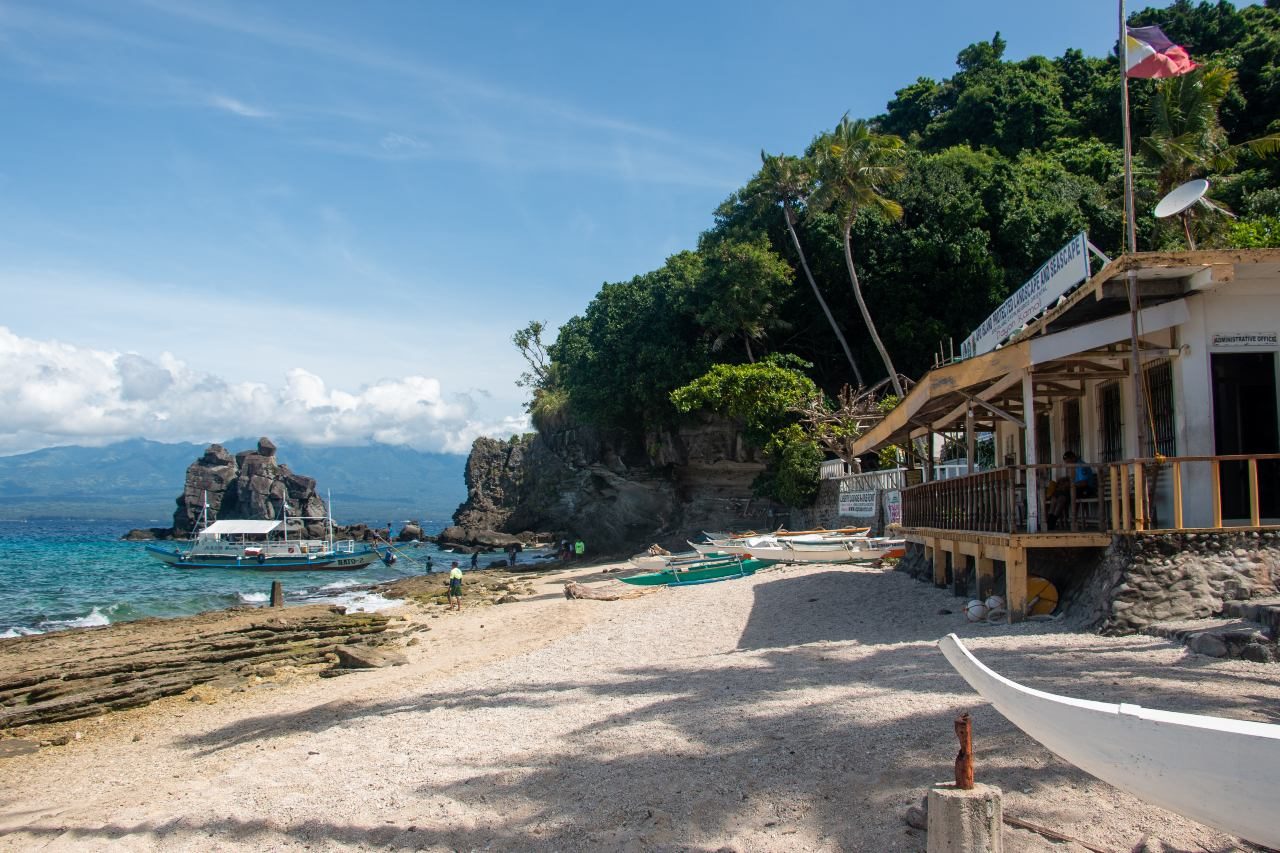
NEGROS ORIENTAL, Philippines – On the picturesque Apo Island in Negros Oriental, a small band of waste workers leads the community’s pushback against the rising tide of plastic waste.

Twice a week, the zero waste workers make their way through narrow alleys, pass under tall coconut trees, and ascend steep trails to collect segregated trash from each household across the 74-hectare island.
“Basura, basura (Trash, trash),” they holler in singsong voices, calling out to residents like pied pipers – but for their trash.
Equipped with reused sacks of hog and chicken feed, they sort each type of trash in their proper category – recyclables go in one bag, residuals in another – ensuring that no waste is left littered in their small village.
For an island community with just over a thousand residents, their efforts to resist the daunting plastic pollution problem may not be grand. But they hope that their example would resonate across other island communities also grappling with the increasing threat of plastic waste.


Growing trash problem
Also called the Apo Island Protected Landscape and Seascape (AIPLS), the island and its surrounding waters – which include a marine sanctuary – have been protected under Philippine law since 1994.
Its pristine waters are home to more than 600 documented fish species and over 400 coral species, making it one of the top dive sites in the country. Endangered green sea turtles and critically endangered hawksbill turtles forage for food in its shallows, drawing tourists who provide streams of income for the locals.
But foot traffic, coupled with the growing population on the island, comes with the challenge of managing waste, most especially plastics. Add to that the seemingly endless plastic litter that the ocean current brings from other islands and provinces, cluttering Apo’s shores and even the turtles’ foraging site.
In 2020, the War on Waste (WOW)-Negros Oriental, a local network of civil society groups and academics advocating proper waste management, partnered with the island’s local officials to introduce to the community the concept of zero waste, which aims to reduce waste generation and those sent to landfills.
The network had rolled out similar zero waste projects in a number of barangays in Dumaguete in the previous year. Apo Island was its first foray outside mainland Negros Oriental.
Merci Ferrer, the project head on zero waste cities, said the wastes produced on Apo Island are no different from those in other areas.
“The waste they generate is what is sold in the market…. A lot are really in sachets, in [plastic] packaging,” she said, referring to goods that locals import from the mainland, including food, beverages, and hygiene products.
Core of waste work
Before zero waste was introduced, there was no systematic garbage collection within the barangay. The residents simply put their unsegregated waste inside sacks. Once full, they disposed of these bags in a materials recovery facility (MRF) near the marine sanctuary. It was set up by the Protected Area Management Board (PAMB), which oversees the island as a protected area.
Without systematic collection and segregation, however, the facility became more of a village dumpsite rather than an actual area where recyclables are sorted from the rest of the waste, locals recalled.
In 2018, Apo Island barangay chairman Mario Pascobello discovered too that some residents were also dumping their refuse in another area inland.
He gave orders to haul out all the garbage there – over 1,000 sacks of mixed waste in total. In the following year, the local council passed a barangay ordinance on ecological solid waste management, signaling that it was time for the village to shape up.
Today, the waste workers are at the core of the zero waste effort. After receiving their own training, they bore the responsibility of educating their neighbors about segregation practices, collecting sorted garbage, and maintaining the four MRFs put up across the island.
Several women signed up for the work, determined to find sources of income as their husbands lost their livelihood during the pandemic. With no tourists, the men who worked as dive and snorkeling guides returned to fishing and farming to bring food to their tables.
“Our zero waste work is a big help for us because it allowed us to get back on our feet, especially during the pandemic,” said Rowena Lumanog, a 38-year-old mother of two, who was among the first waste workers on the island.
Reduced volume
Before the project was introduced, Lumanog never thought that she would be working with waste. Now, she is one of the five zero waste workers on Apo Island; four of them are mothers like her. Their lean team has only one male, the husband of one of the workers.
Elizabeth Vale, 54, recalled that when they started out, their small village produced a lot of waste.
Segregation at source, despite being enshrined in the decades-old Ecological Solid Waste Management Act, was hardly observed. An unsorted trash bag, for instance, could include a mix of plastic and glass bottles, thin film bags, sachets, food waste, fish guts, and other compostables, like twigs and leaves.
“But when people learned to segregate, the volume of waste was really reduced,” she said.
The waste workers implement a strict no segregation, no collection policy. At first, the villagers were somewhat resistant to sorting their rubbish – after all, it was easier to just chuck them all together in a bin. But with the workers firm with implementing the policy, the locals slowly warmed up to the effort.
Pump boats that ferry their garbage to a landfill on the mainland used to take several trips in a month to haul the island’s refuse. Today, a significantly lesser volume of waste composed mainly of residuals, such as sachets and film bags that can no longer be reused or recycled, remain in the trash heap. The trips to the mainland dwindled to once or twice in a month.
Those who had turned to planting cassava and other vegetables during the pandemic also learned to use compostables for their gardens. These include food wastes that they used to discard immediately.
More importantly, the zero waste work on the island diverts a considerable volume of recyclables, such as PET bottles and aluminum cans, from the landfill. Their work also prevents more plastics from leaking into the ocean, which could harm marine life and break into microplastics over time.
Once they reach a good volume after a few months, the workers ferry the collected recyclables and sell them to a junk dealer on the mainland. They then use their earnings of a few thousand pesos to buy necessities for their waste work, such as sacks, gloves, and materials to repair the MRFs. The remainder is split among them to augment their income.


Challenge to sustain
Two years later, the community on Apo Island has embraced segregation and zero waste, although it remains a work in progress.
In the absence of clear plastic regulations both at the barangay and municipality levels, single-use plastics are still commonly used on the island.
Without access to potable water on the island, plastic water bottles are still a fixture in sari-sari stores, as are snacks and other products sold in sachets and plastic packaging.
Even though the villagers have been taught how to properly sort and segregate their waste prior to collection, not every household does a thorough job, Lumanog said.
“In that case, they will be summoned by the barangay to be reminded,” she said.
But the biggest challenge to sustaining the work is the support for the waste workers themselves.
At the start of the project in 2020, the workers received a monthly honorarium of P2,000 each from WOW-Negros Oriental. As part of the agreement, the government began supporting them after the initial year.
In 2021, the provincial Department of Environment and Natural Resources (DENR) office, through the PAMB, paid their workers’ wages. This setup, however, was terminated at the end of last year, leaving the workers in limbo. WOW-Negros Oriental had to step in anew to support them and ensure their livelihoods would continue.
“Unfortunately, this year, the income is insufficient to support other activities, forcing the office to cut off major administrative and management activities, which also included their employment,” the DENR-AIPLS said in an email response to questions sent by Rappler.
While it said that it “cannot predict the availability of the funds,” the office said it remained hopeful that with the return of tourists who pay an environmental fee to the island, it would be able to support the project by 2023.
“As long as the protected area generates income, the office can support initiatives like this for the benefit of the community,” it added.
In a barangay session attended by the waste workers on September 2, Pascobello gave assurances that their paid work would continue. He said he had already raised the matter with the PAMB, where he sits as a board member.
“The workers are important and, of course, they need to be paid.
Apo Island Barangay Chairman Mario Pascobello
Lumanog and the other workers are hopeful they could continue doing the work they had learned to love.
“The visitors who come here tell us that they are amazed by our zero waste work,” she said. “They say, ‘Wow, we wish we had this in our communities, too.'”
“And it makes us feel good,” she added, “because in our own way, we help protect our environment.”

Beyond the island
To truly keep the waters of Apo Island pristine and litter-free, efforts to combat plastic waste must go way beyond their small community.
Ferrer said it requires that clear policies and systems be in place, which in turn, can shape people’s mindsets and behaviors about the waste that they produce.
On a recent afternoon, Lumanog and the other women waste workers were strolling by the marine sanctuary when they found themselves in an unplanned beach cleanup.
It was well past their working hours, but they saw that the rocky shore was littered with plastic waste, from catsup packets and tubs of margarine to pieces of fabric and torn-up styrofoam.
They even found a plastic bottle with its labels written in Bahasa Indonesia. But no matter – they looked for sacks and got to work.
While many local initiatives to address plastic pollution have sprung across the country, concerted efforts from the government, private sector, and individuals are still needed to close the tap on plastic waste.
“These cleanups would never end if we do not connect and work with all the islands around us,” said Ferrer.
“All that Apo Island is doing is a contribution,” she said. “If Apo can do it, why can’t others?”
As they filled yet another sack with plastic waste that drifted from elsewhere, Lumanog shared her dream that their small island won’t be alone in this battle.
“I really wish that other islands and even all countries around the world would practice zero waste,” she said. “After all, this work that we do is for the generations after us.” – Rappler.com
All quotes in Filipino have been translated to English. Reporting for this story was supported by the Internews’ Earth Journalism Network.
Add a comment
How does this make you feel?
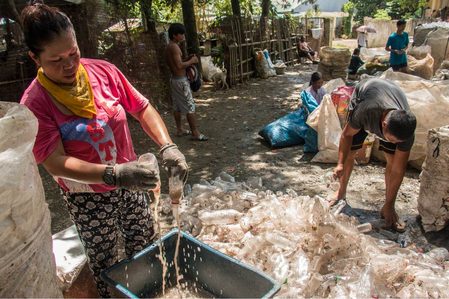
















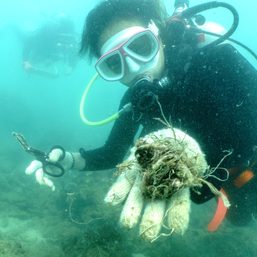
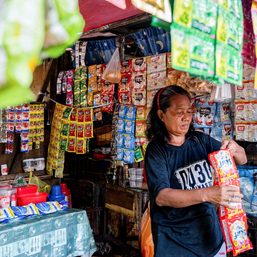
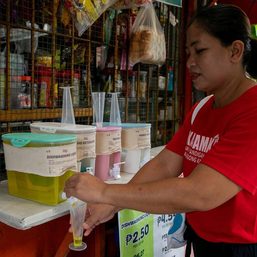
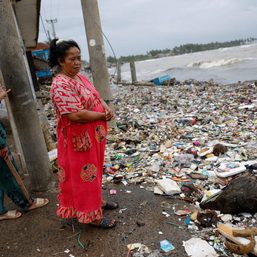
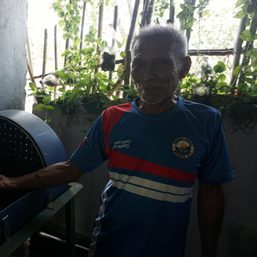
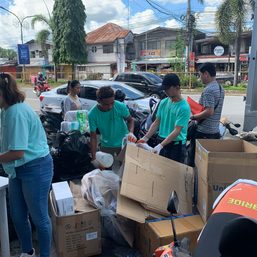
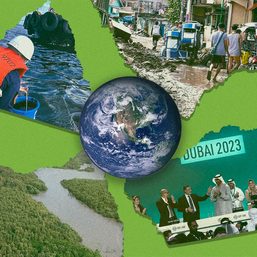
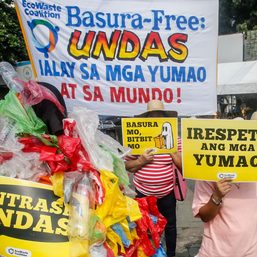
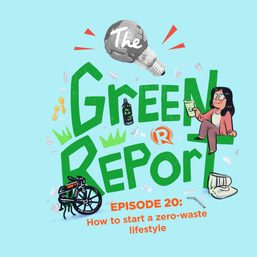
There are no comments yet. Add your comment to start the conversation.